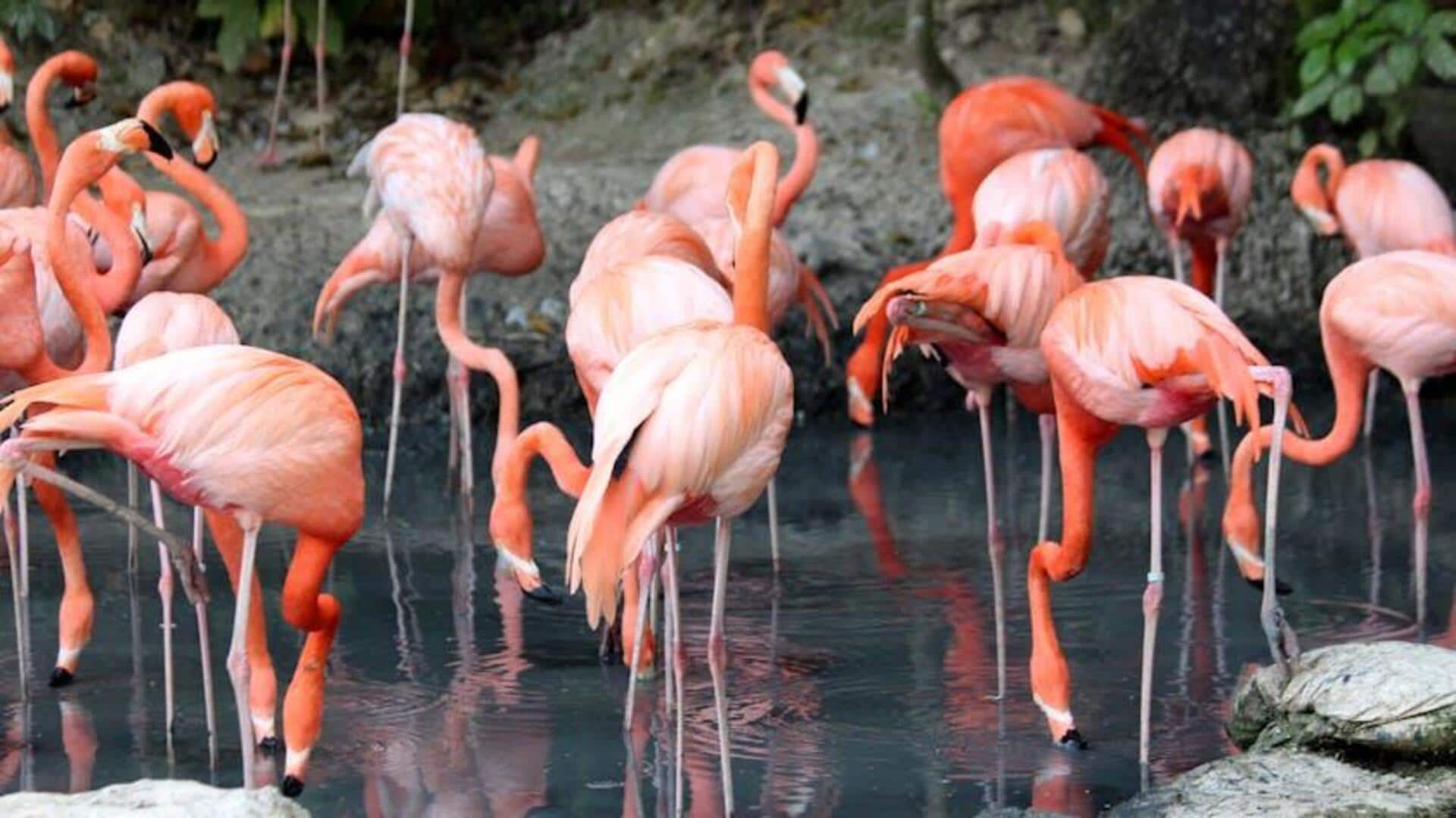
Tracking flamingo migrations in Kenya's lakes
What's the story
Kenya's lakes are world-famous for their colorful birdlife, especially the millions of flamingos that turn the waters pink. These birds migrate between lakes following food sources and ideal breeding conditions. Witnessing these migrations is a once-in-a-lifetime opportunity to see one of nature's most beautiful phenomena. This article provides tips on how to best experience and understand the flamingo migrations across Kenya's Rift Valley lakes.
Migration
Understanding flamingo migration patterns
Flamingos are extremely migratory, constantly shifting between lakes according to changes in water levels and food supply. The most common species in Kenya, the lesser flamingo, favors alkaline or saline lakes. These conditions are ideal for the growth of blue-green algae, their primary food source. Their migration is heavily influenced by seasonal rainfall patterns. During these periods, tens of thousands of birds gather at preferred sites.
Timing
Best times to visit for flamingo sightings
The optimal periods for witnessing flamingo migrations in Kenya align with the dry seasons, which generally occur from June to September and January to February. At these times, receding water levels concentrate algae, drawing hundreds of thousands of flamingos to the area to feed and breed. And, early mornings and late afternoons offer the most spectacular views for birdwatchers.
Locations
Ideal locations for flamingo watching
Lake Nakuru National Park used to be the most iconic spot for flamingo sightings. Unfortunately, changing water levels have disrupted this once reliable haven, causing birds to constantly move between lakes. Lake Bogoria has become the new favorite for flamingos, thanks to its stable conditions and plentiful algae. Lake Elementaita also provides tranquil viewing experiences away from larger crowds.
Etiquette
Tips for responsible birdwatching
When viewing flamingos, please be mindful not to disturb them. Use binoculars or long lenses for photography to avoid getting too close. Stay on designated paths and viewing areas within national parks and reserves. And, consider hiring a local guide. They can provide insights into flamingo behavior and ensure your visit doesn't disturb the wildlife.
Gear
Essential gear for flamingo tracking expeditions
An enjoyable birdwatching experience necessitates adequate preparation. High-magnification binoculars are crucial for peacefully observing far-off flocks without disturbance. A good camera with a telephoto lens enables you to immortalize your sightings with clarity and detail, even from a distance. Remember to dress comfortably for changing weather conditions and wear sturdy walking shoes or boots for navigating uneven paths around lake shores.